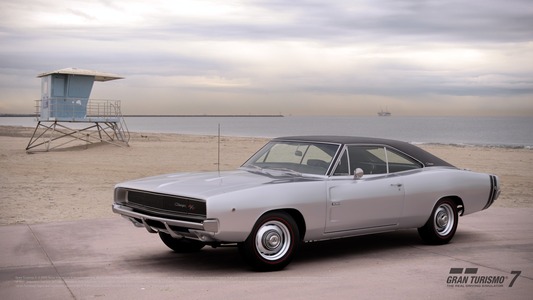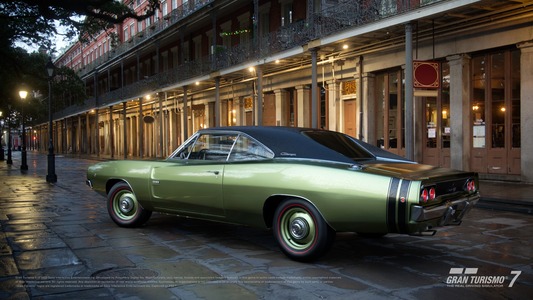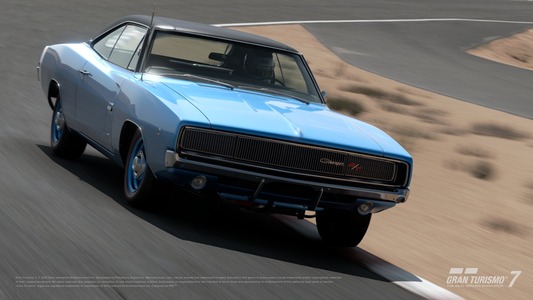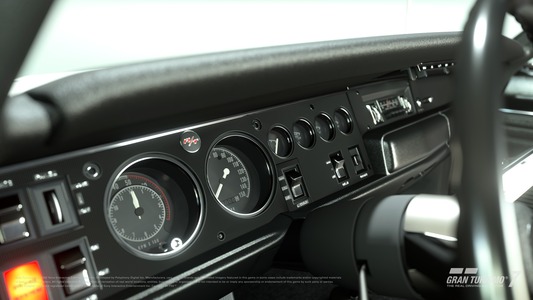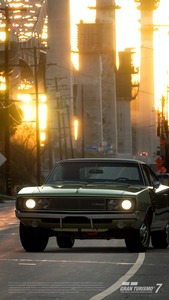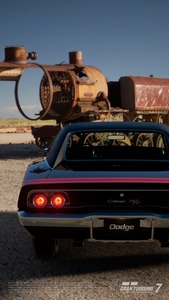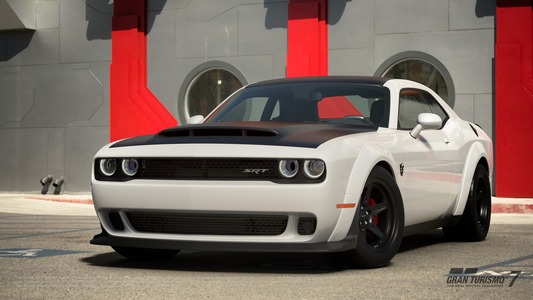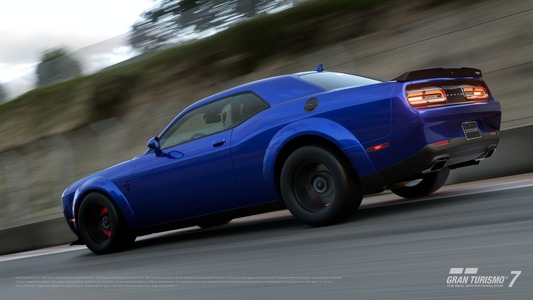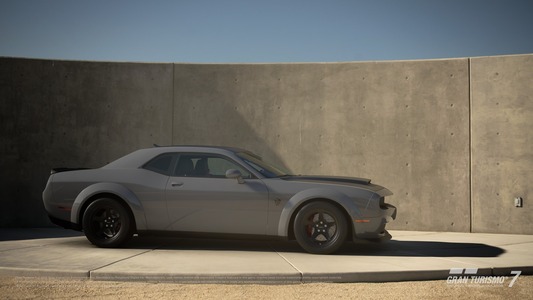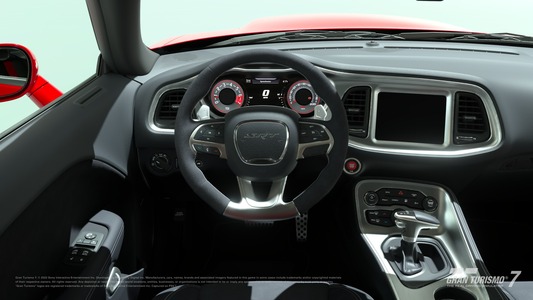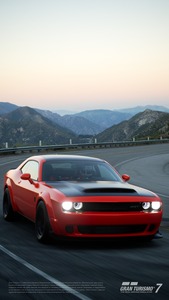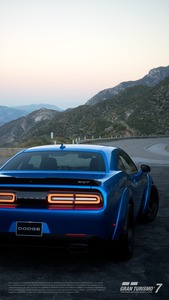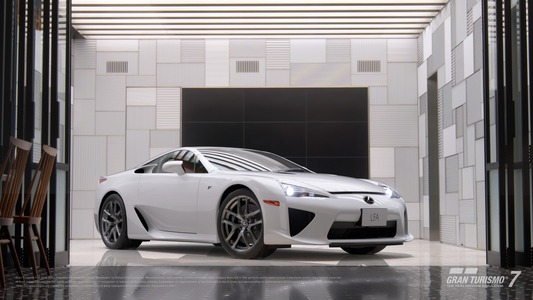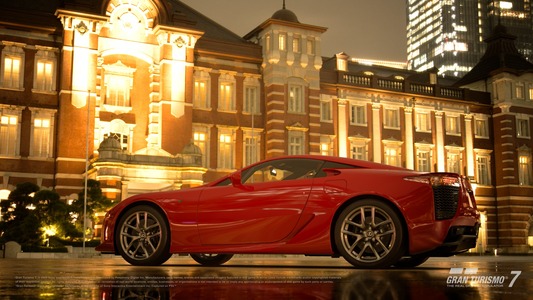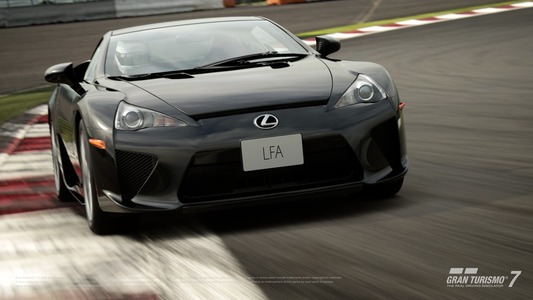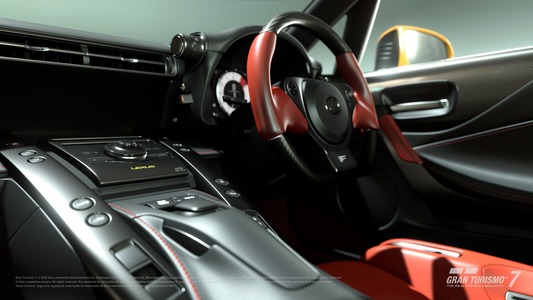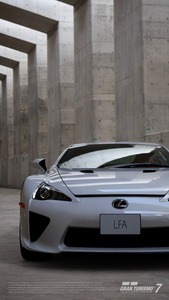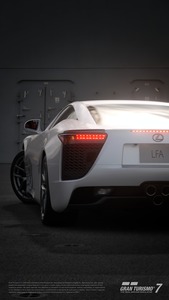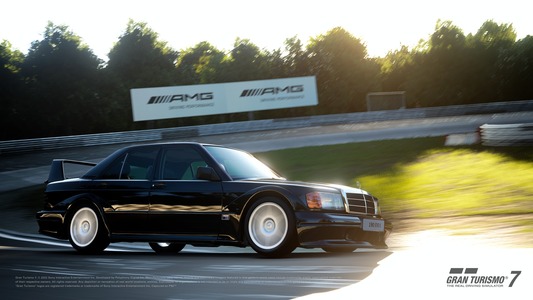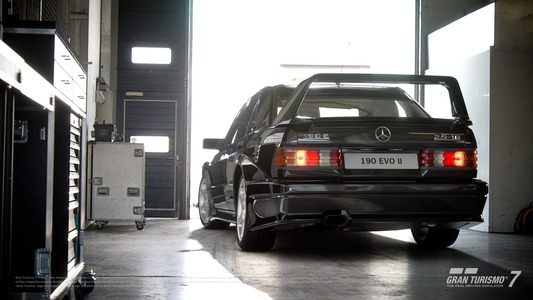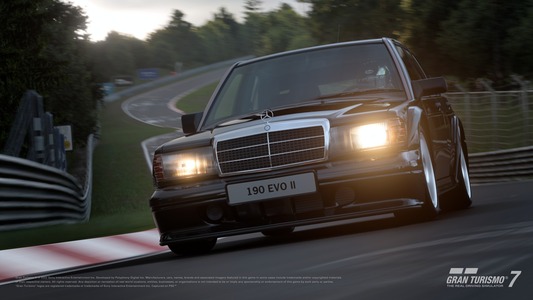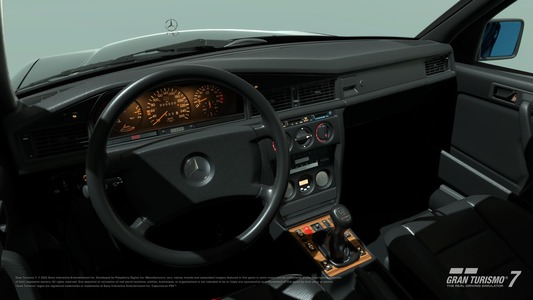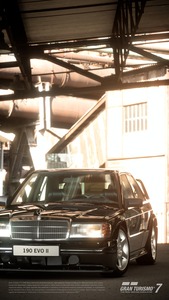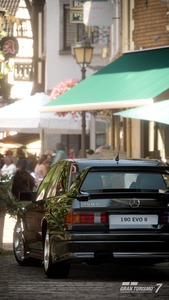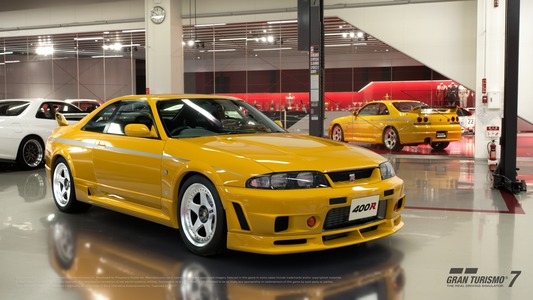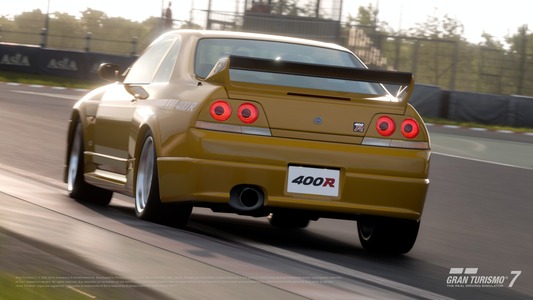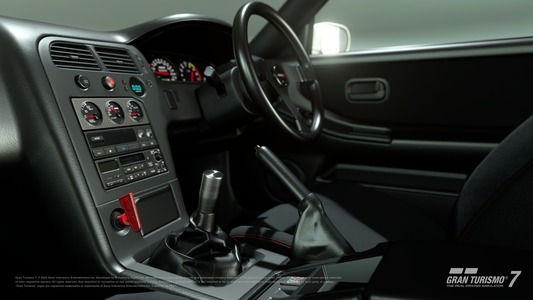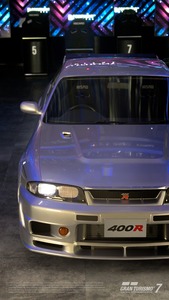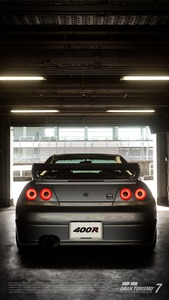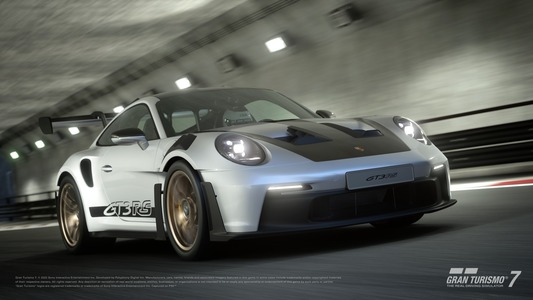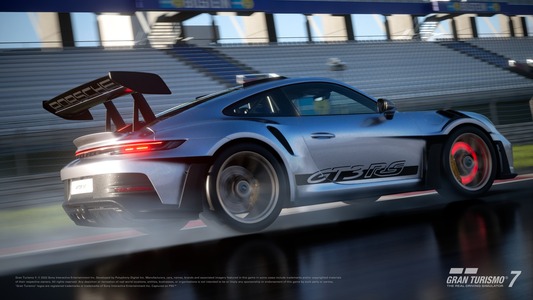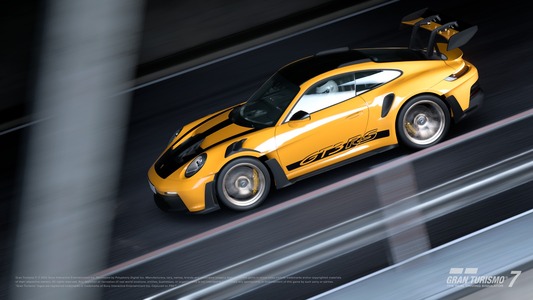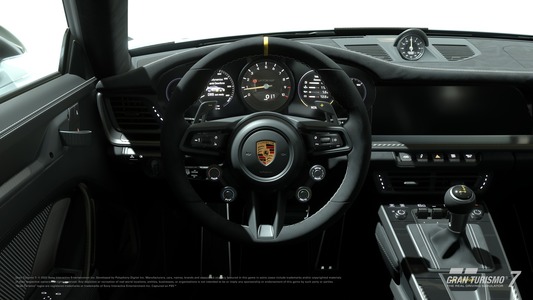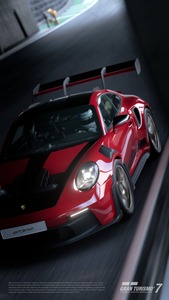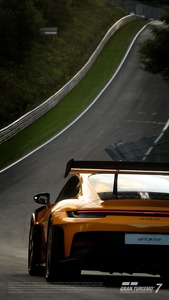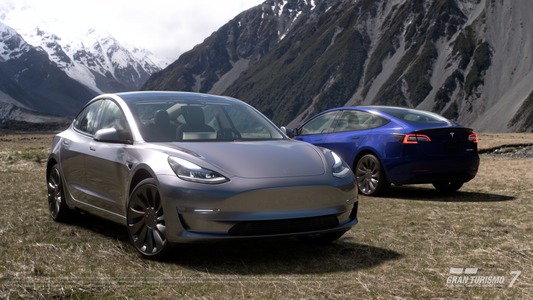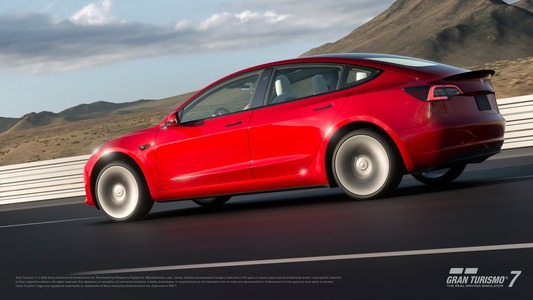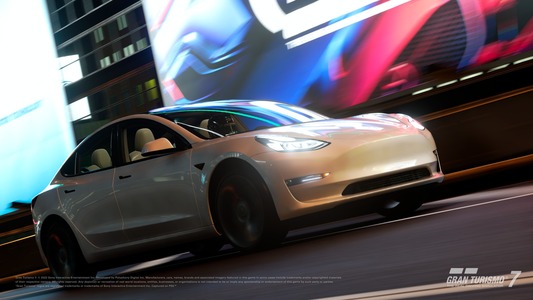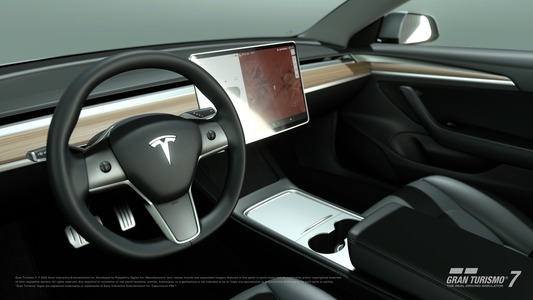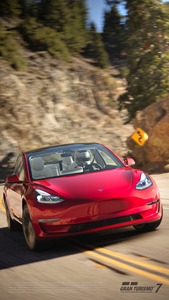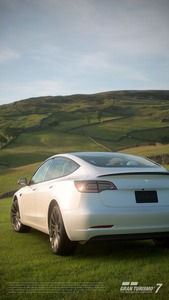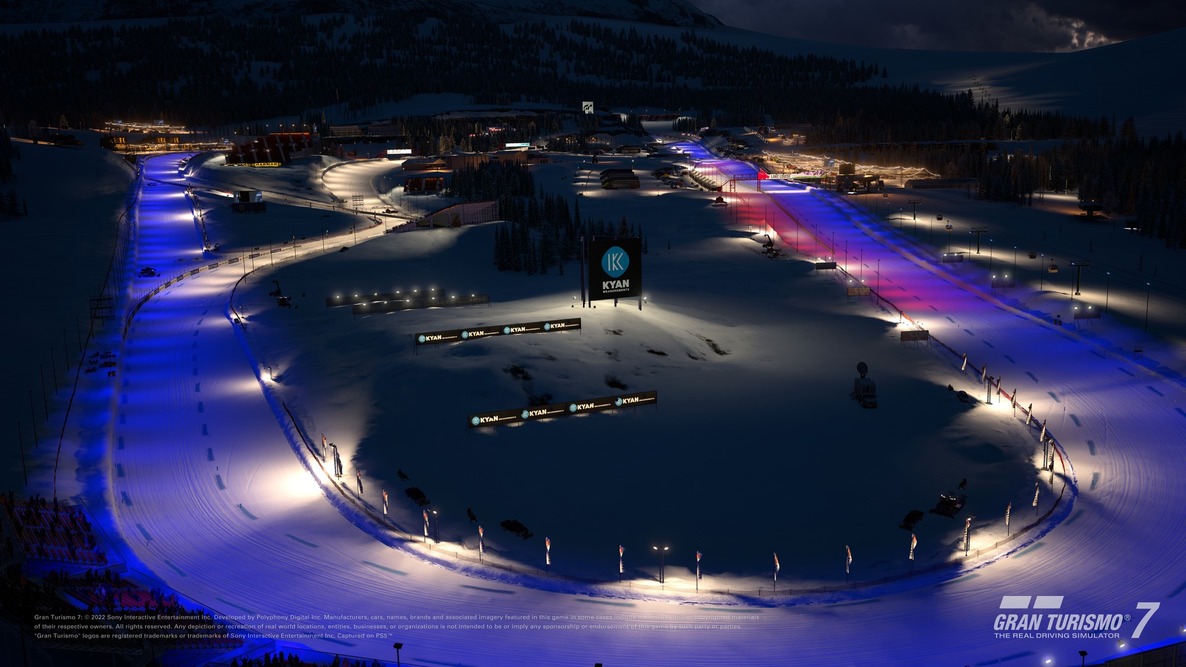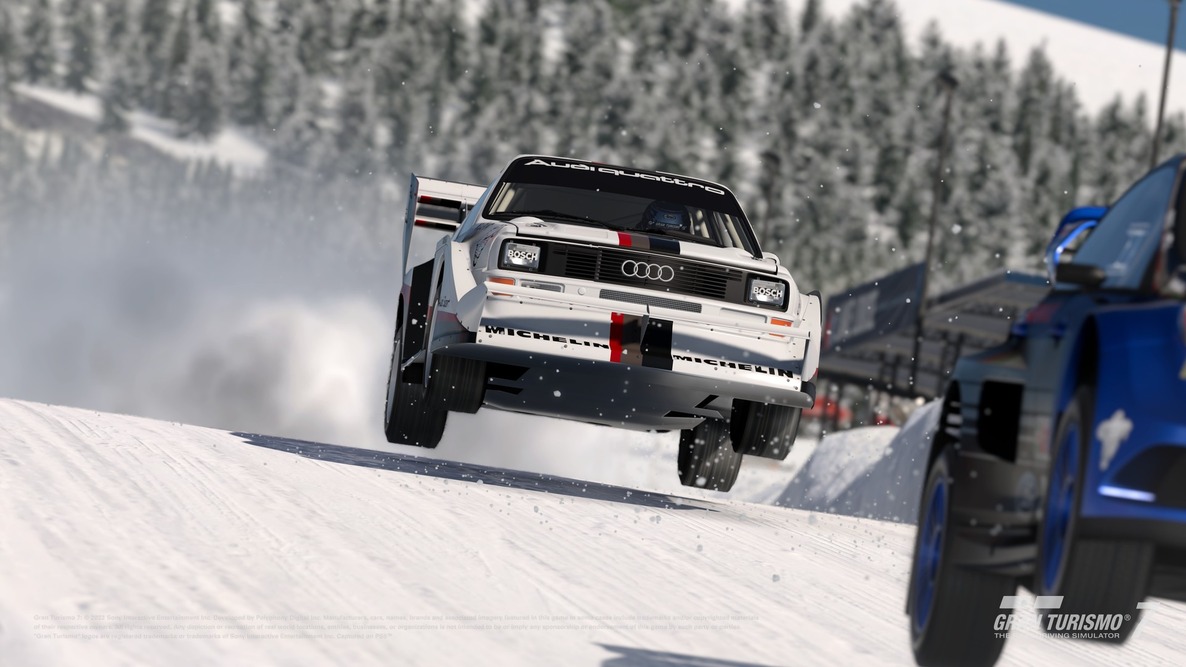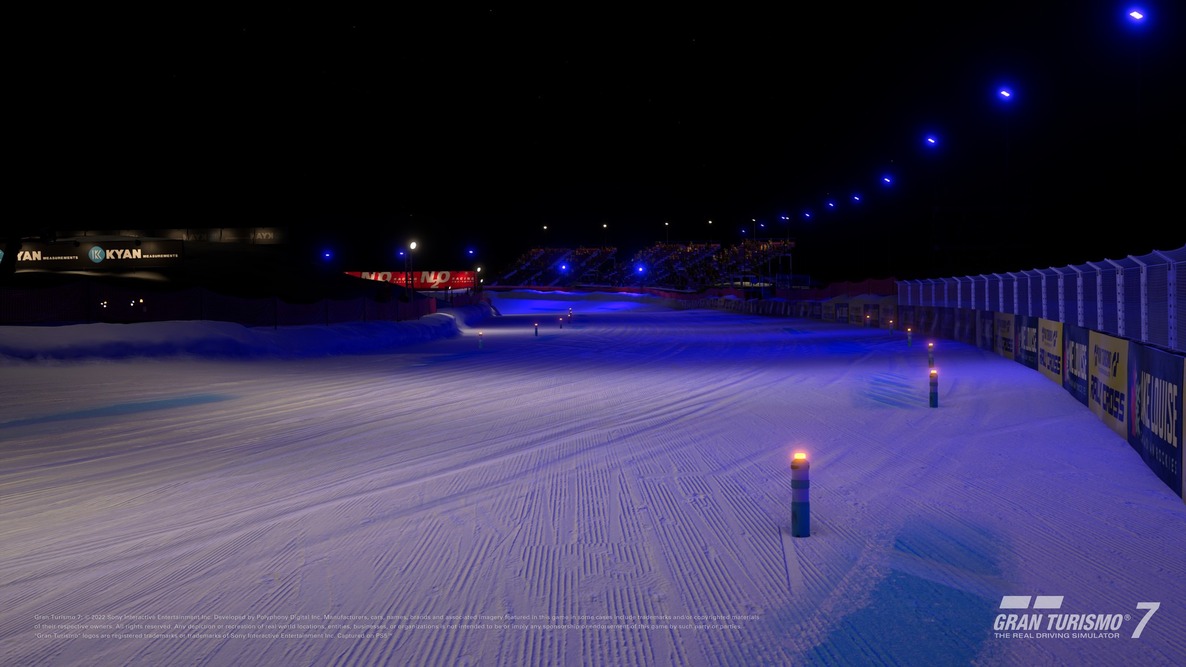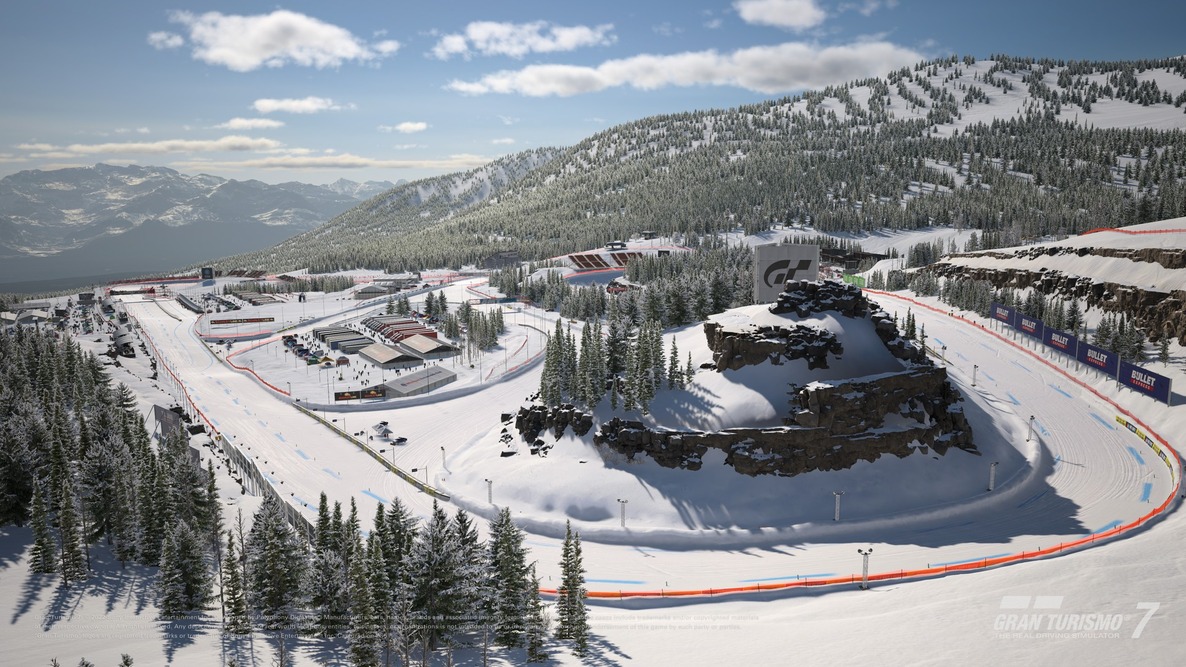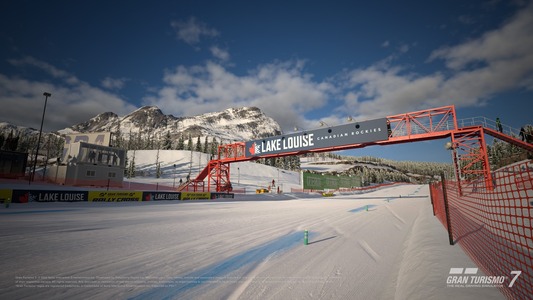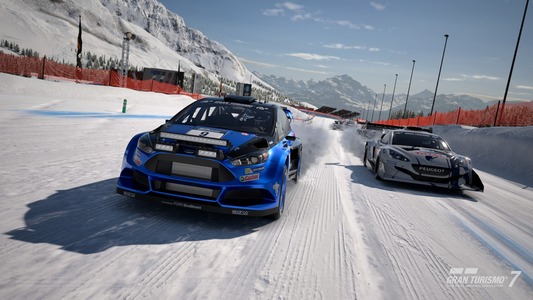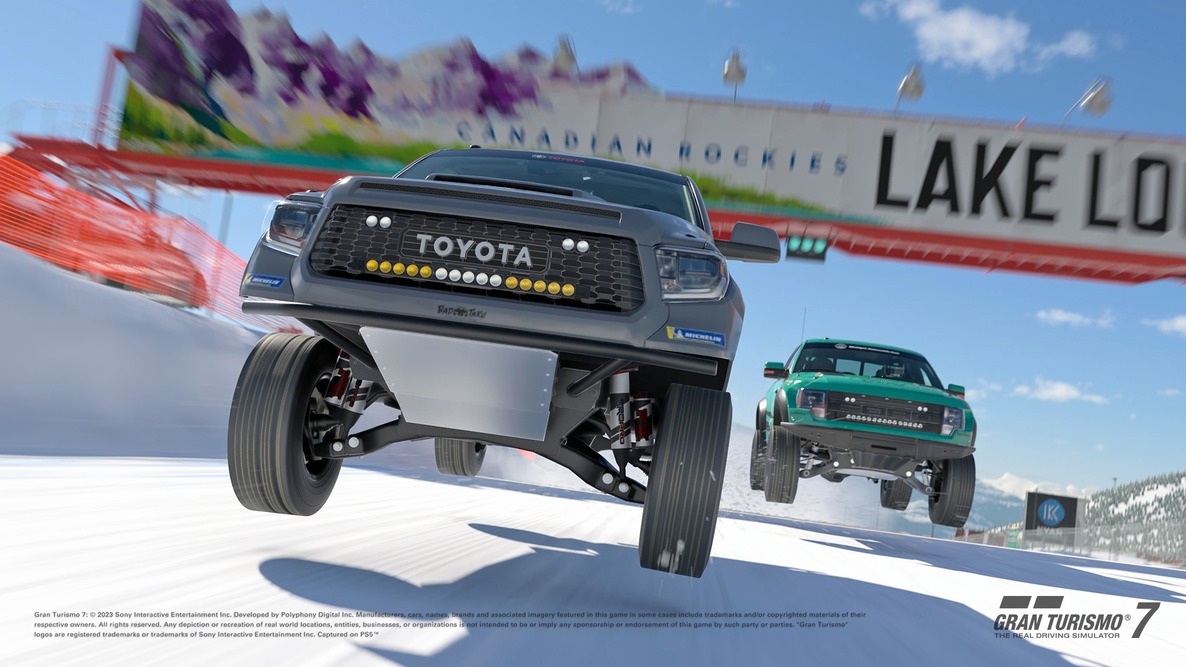New Cars and Track Added with the 'Spec II' Update
The 'Spec II' update introduces seven new cars as well as a long-awaited new track.
1. Seven new cars, featuring modern and classic sports cars. 'Spec II' now features 483 cars across 67 brands.
With the release of the 'Spec II' update, the lineup of cars in Gran Turismo 7 has now increased to 483 models across 67 brands. Apart from the cars featured here, the game has wide variety of models from all countries, eras, and categories. Find your favourite and take it out for a spin.
Dodge Charger R/T 426 Hemi '68
A true 60s muscle car, the envy of collectors everywhere.
Released by Chrysler in 1966, the Dodge Charger is one of the most representative models of the muscle car boom that swept the American car scene in the 1960s. The car is easily recognised by its elongated 2-door fastback silhouette. It was also popular for its power, as the car was fitted with a large displacement V8 engine across all model grades. The Charger received a minor facelift in 1968. One of the most exciting implementations in this update was the introduction of the 'R/T' (Road/Track) performance package. This package increased the sports performance of the chassis, including upgraded suspension and upgraded brakes, as well as the option to upgrade the engine to the 426 Hemi unit, a 7L engine developed from NASCAR racing engines. This made it the fastest model in the 1968 lineup.
Dodge Challenger SRT Demon '18
A Demon born simply to run the quarter-mile as fast as possible.
The 3rd generation Dodge Challenger was introduced in 2008 as the true successor to the masterpiece muscle car that was the original Challenger. Several years after the release of the SRT Hellcat in 2015, a pinnacle of performance itself, 2018 saw the introduction of the SRT Demon, produced in a limited run of just 3300 units. This car is a monster built for the single purpose of winning drag races. The engine, based on the Hellcat model, has been tuned to achieve such astounding figures as a 0-62 mph time of 2.3s and a quarter mile time of just 9.65s. The body is also a full drag strip setup with no passenger or rear seats included as standard, though they are available as an option. The SRT Demon was even banned from racing in stock condition by the NHRA (National Hot Rod Association) who stated the car was too fast to compete without a roll cage or parachute. The Demon is certain to go down in Dodge history as one of their greatest monsters.
Lexus LFA '10
An ultra high-tech sportscar that achieved ultimate performance with mass-production quality.
20 years before Japan’s automotive industry was truly recognised by the world, Toyota created a sports car called the 2000GT which combined the latest technology of the 1960s. In the 21st century, Lexus would create another cutting-edge sports car that would continue that legacy: the LFA. The car uses a transaxle layout with a rear-mounted radiator, which along with a dry-sump lubrication system to mount the engine lower, results in a perfectly balanced sports car, 48-52 front-to-rear weight distribution, with a low centre of gravity. Able to accelerate to 62.1 mph in just 3.7 seconds with a top speed of 201.9 mph, the high-performance LFA is also quite rare as it was produced in a limited run of only 500 cars worldwide.
Mercedes-Benz 190 E 2.5-16 Evolution II '91
Born from touring racing, the ultimate evolution of the 190 E.
In the early 1980s, Mercedes-Benz decided to return to motorsports after a long absence. They developed a sports model based on the compact 190 series, which was released in 1983 as the 190 E 2.3-16. The highlight of the 2.3-16 was its engine which was based on a 2.3 L SOHC inline-4 that Mercedes already had in production. The head was changed for a 16-valve DOHC setup, and the entire unit was tuned by F1 virtuosos Cosworth, resulting in a sporty engine producing 185 PS maximum power and 23.1 kgfm maximum torque. With this engine, the 190 E 2.3-16 began racing in the Deutsche Tourenwagen Meisterschaft (DTM) in 1986. The car was updated in ’88 and ’89 before the ultimate evolution finally appeared in 1990 with the 190 E 2.3-16 Evolution II. A mere 500 of these Evolution IIs were produced during its limited run, but it took the DTM by storm in 1992, proving that it truly was the ultimate 190 E, forged in the fires of touring car racing.
NISMO 400R '95
Boasting 394.5 BHP and an extremely limited production run, the ultimate R33 GT-R from NISMO.
A maximum power output of 400 PS and a price tag of 12,000,000 yen. In 1996, when cars were traditionally limited to 280 PS in Japan and a new R33 Skyline GT-R cost 4,000,000 yen, the 400R was a fully tuned model that astonished fans with its outrageous figures. The power unit is based on a version of the RB26DETT engine called the RBX-GT2. To keep the car road-worthy, the maximum output was kept to a relatively moderate level but the engine was tuned to achieve high torque at low rpms making it easier to handle than the regular engine. At the same time, the engine delivers a mighty amount of power at high revs requiring a twin-plate clutch unit to be fitted. A lightweight carbon-fibre propeller shaft was also added along with a bespoke suspension kit with Bilstein dampers, front and rear reinforced stabilisers, and reinforced bushings.
Porsche 911 GT3 RS (992) '22
A hyper performance street car packed with racing car features.
Released in the summer of 2022, the Porsche 911 GT3 RS (992) is a hyper performance street car that brings the aerodynamics of the 911 GT3 R, a true race car, to the 992 model. The most obvious feature is the swan neck mounted rear wing, the largest ever on a production Porsche model. It features an F1 style DRS (drag reduction system) which under certain conditions allow the wing to be positioned flat at the touch of a button, reducing drag, and enabling the car to reach its top speed. Additionally, when hard braking from high speeds, the front adjustable active diffuser can act as an air brake to increase braking performance. The powertrain uses a naturally aspirated 4L flat-6 engine mated to a 7-speed PDK transmission, producing 5 ps more than the previous model at 525 ps though the maximum torque is 0.51 kgm less at 47.42 kgm. It is able to accelerate from 0-100 km/h in 3.2s and can achieve a top speed of 296 km/h.
Tesla Model 3 Performance '23
The bestseller from the company that changed the EV market forever.
The Tesla Model 3 is a sedan EV first introduced in 2016. Inside the sporty 5-door hatchback style body is a surprisingly simple cabin space. There are almost no switches on the dashboard or centre console, with almost all functions of the car from the climate control to the 'autopilot' system being controlled from a 15-inch touch screen. The most powerful model in the lineup is the Performance Dual Motor AWD grade which was available from its debut until 2023. This all-wheel drive system places an electric motor on each of the front and rear axles and while the total system output has not been officially published, it has a 0-100 km/h time of 3.3s and a top speed of 261 km/h.
2. Try snow racing at ‘Lake Louise’ in the Canadian rockies. Now featuring 116 layouts across 38 locations.
Lake Louise is a completely new original course designed around a fictional ski resort located in the foothills of the Canadian Rocky Mountain Parks World Heritage Site. There are three layouts available, the 'Long Track,' the 'Short Track,' and the 'Tri-Oval' which all have settings for night races. All layouts feature snowed over roads so 'Snow Tyres' are required. With the addition of Lake Louise, the track lineup of Gran Turismo 7 now spans 116 layouts across 38 locations.
Lake Louise Long Track
Track Length: 3,694 m, Elevation Difference: 78 m, Number of Corners: 11, Longest Straight: 765 m
As its name suggests, ‘Lake Louise Long Track’ is the longest of the three layouts. This technical course starts with a series of mid- to high-speed corners with the latter half narrowing to tighter corners. Cars need the stability to take on the high-speed areas while retaining the quick cornering response for the smaller corners. The bank angles change drastically in the late stages resulting in near blind corners, so this course requires some forward-thinking lines and pre-emptive actions.
Lake Louise Short Track
Track Length: 2,577 m, Elevation Difference: 63 m, Number of Corners: 7, Longest Straight: 765 m
This layout takes a shortcut after Turn 1 of the 'Long Track' course. It features a series of winding mid-to-high speed corners, and while not a difficult course, a single mistake can result in a major time loss here. The key to this course will be how well you can maintain your speed through the consecutive corners of the mid-section.
Lake Louise Tri-Oval
Track Length: 3,068 m, Elevation Difference: 78 m, Number of Corners: 3, Longest Straight: 1,184 m
The 'Tri-Oval' is a simple layout with just three corners. It has the longest straights of all three layouts, and though there aren’t many corners to master, each one is relatively tight so controlling your speed with braking is important. You’ll also need to be careful during races as the corners are a hot spot for collisions.
Try snow racing at Lake Louise
With the addition of Lake Louise comes three new race events in World Circuits: 'Pickup Truck Race,' 'Japanese 4WD Challenge,' and 'World Rally Challenge Gr.B'. So, pick up some snow tytes and get ready for a wild kind of racing that permanent road circuits could never deliver.


